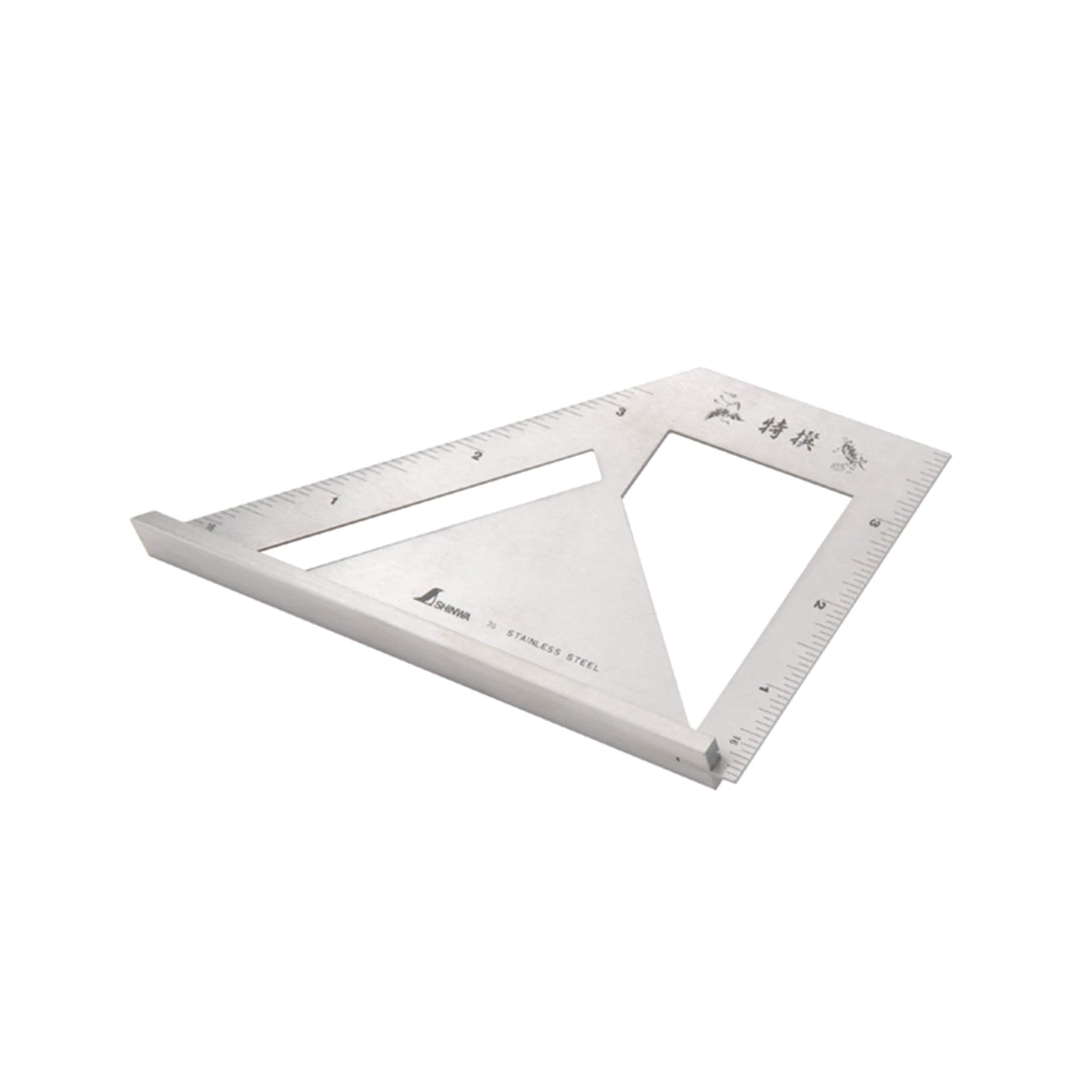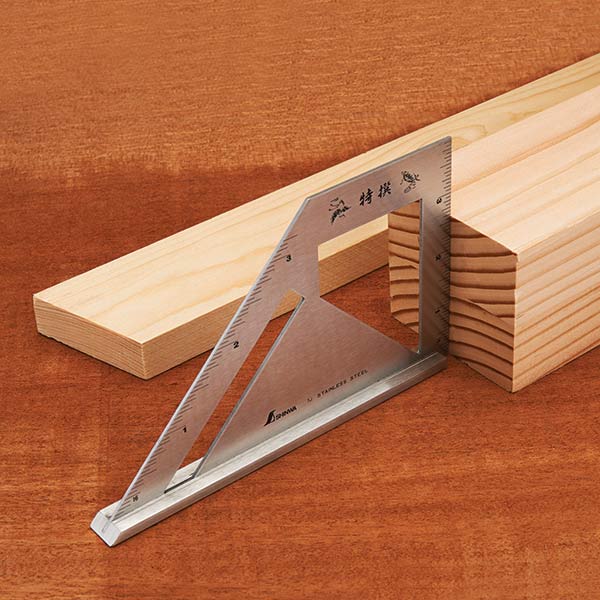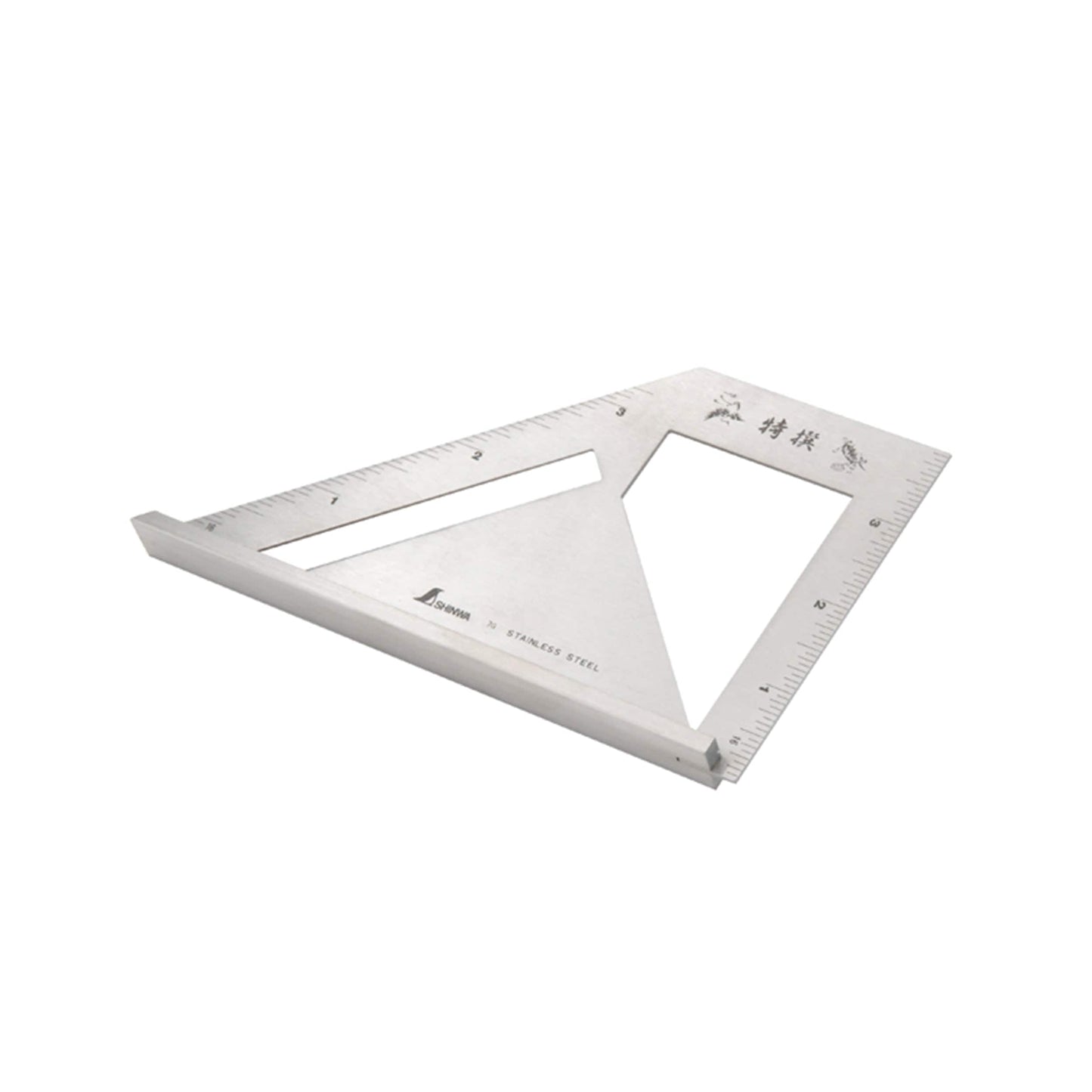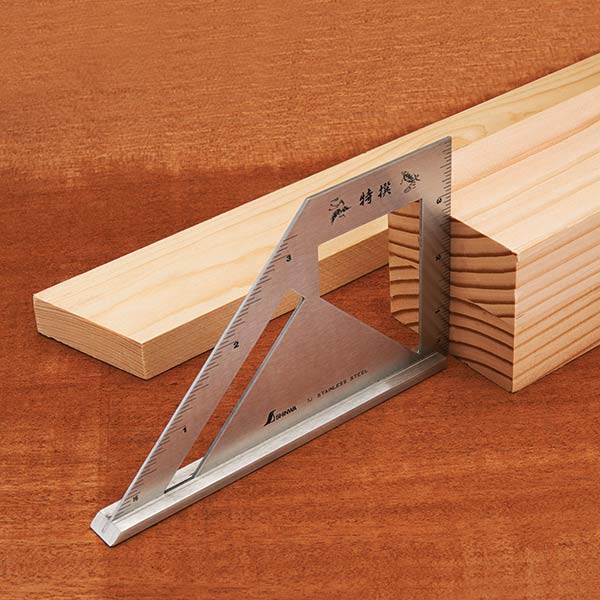Shinwa® Japanese Combination Square is a 90º try square and a 45º miter square. Machined from stainless steel with graduations etched and black filled in 1/16" increments. The 1/2" flat base allows this square to stand by itself for power tool setup or it can be hooked on the edge of your stock for layout work. 4" tall by 6-1/4" long.
Features:
- 90 degree try square and 45 degree miter square
- Machined from stainless steel with graduations etched and black filled in 1/16" increments
- Similar to the Combination Square but without a 90º angle
- 4-1/2" long base x 2-1/2" tall
What's Included:
- (1) Shinwa® Japanese Combination Square




